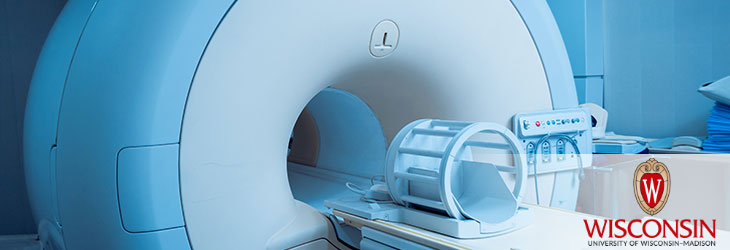Radiation Therapy

Improved Portal Imaging During Radiation Therapy Using a Modulated Treatment Beam
WARF: P06159US
Inventors: Ian Nelson
The Wisconsin Alumni Research Foundation (WARF) is seeking commercial partners interested in developing a device that promises to enhance the quality of portal X-ray images created from high-energy treatment beams without affecting patient treatment.
Overview
Before, after, and during radiation therapy, images of the patient are generated to ensure that radiation is delivered to the tumor site’s precise location. Instruments known as portal imaging devices make use of high-energy treatment radiation exiting the patient to produce X-ray images of the patient’s anatomy.
The problem with this approach is that Compton interaction of high-energy X-rays reduces image contrast and creates a fog over the image. Thus, high-energy X-rays give much poorer image quality than the low-energy X-rays typically used for diagnostic imaging.
The problem with this approach is that Compton interaction of high-energy X-rays reduces image contrast and creates a fog over the image. Thus, high-energy X-rays give much poorer image quality than the low-energy X-rays typically used for diagnostic imaging.
The Invention
High-energy treatment beams always include lower energy components, however, and a UW-Madison researcher has now devised a way to modulate the beam, without affecting patient treatment, so that only low-energy X-rays contribute to portal images. The device, which includes multiple filters and bandwidth-narrowed detection, can create quality images at a rate of approximately 10 per second. The filters modulate the low-energy X-rays already present in the treatment beam. The detector then screens out all un-modulated, high-energy beam components to create clear, quality images strictly from low-energy, non-interacting X-rays.
Applications
- Radiation therapy
Key Benefits
- Promises to enhance the quality of portal X-ray images created from high-energy treatment beams without affecting patient treatment
- Could be used to produce images immediately before and after treatment, as well as in real-time during treatment
- Eliminates the need for a separate, low-energy X-ray source to produce quality images during radiation therapy, reducing the total radiation dose to patients
- Not only removes high-energy X-rays from the image, but also those low-energy photons resulting from Compton scatter, which also reduce image quality